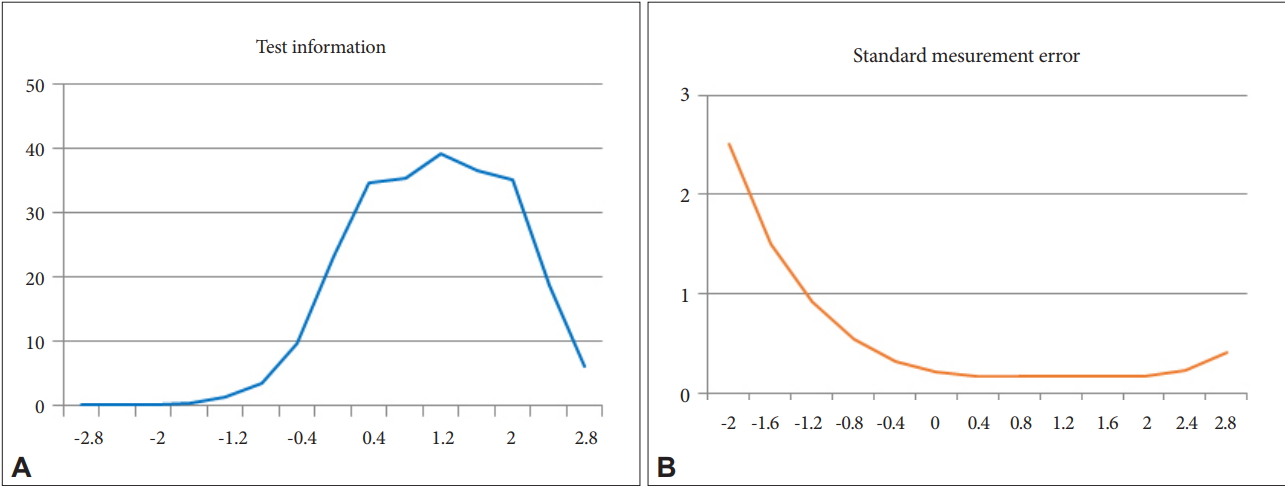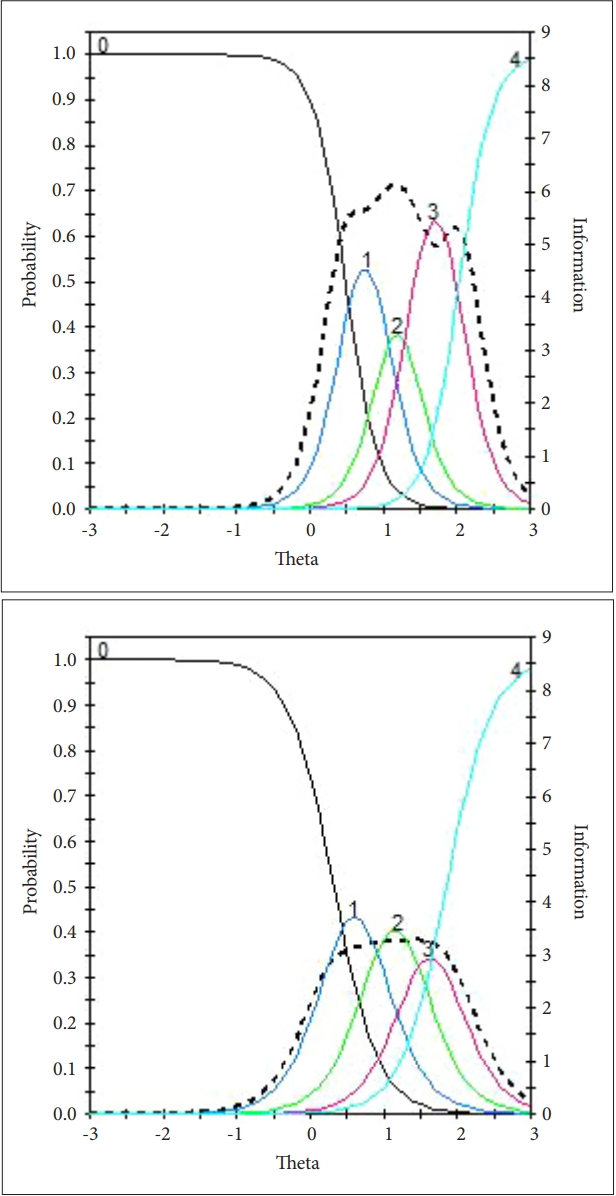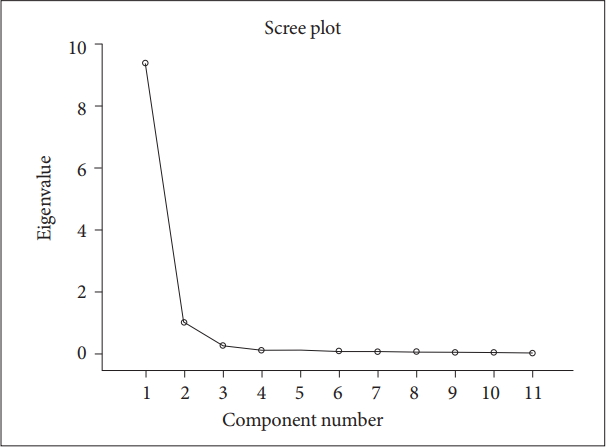1. Kessler RC, Berglund P, Demler O, Jin R, Merikangas KR, Walters EE. Lifetime prevalence and age-of-onset distributions of DSM-IV disorders in the National Comorbidity Survey Replication. Arch Gen Psychiatry 2005;62:593-602.


2. Cho MJ, Ham BJ, Hong JP, Lee DW, Lee JY, Jung IW. The Epidemiological Survey of Psychiatric Illnesses in Korea 2006. Seoul: Ministry of Health & Welfare; 2007.
3. Cho MJ, Sung S, Shin S, Kim J, Jeon S, Kim M. The epidemiological survey of mental disorders in Korea. Seoul, Ministry of Health and Welfare 2011. Available at:
http://www.mohw.go.kr/. Accessed March 23, 2018.
4. Zimmerman M, Chelminski I, Young D, Dalrymple K. A clinically useful anxiety outcome scale. J Clin Psychiatry 2010;7:534-542.

5. Zimmerman M, Chelminski I, Young D, Dalrymple K, Walsh E, Rosenstein L. A clinically useful self-report measure of the DSM-5 anxious distress specifier for major depressive disorder. J Clin Psychiatry 2014;75:601-607.


6. Yook SP, Kim ZS. A clinical study on the Korean version of Beck Anxiety Inventory: comparative study of patient and non-patient. Kor J Clin Psychol 1997;16:185-197.
8. McQuaid JR, Stein MB, Laffaye C, Ramel W. Use of brief psychiatric screening measures in a primary care sample. Depress Anxiety 2000;12:21-29.


10. Julian LJ. Measures of anxiety: State-Trait Anxiety Inventory (STAI), Beck Anxiety Inventory (BAI), and Hospital Anxiety and Depression Scale-Anxiety (HADS-A). Arthritis Care Res (Hoboken) 2011;63(Suppl 11):S467-S472.


11. Leyfer OT, Ruberg JL, Woodruff-Borden J. Examination of the utility of the Beck Anxiety Inventory and its factors as a screener for anxiety disorders. J Anxiety Disord 2006;20:444-458.


12. Spitzer RL, Kroenke K, Williams JB, Löwe B. A brief measure for assessing generalized anxiety disorder: the GAD-7. Arch Intern Med 2006;166:1092-1097.


13. Plummer F, Manea L, McMillan D. Screening for anxiety disorders with the GAD-7 and GAD-2: a systematic review and diagnostic metaanalysis. Gen Hosp Psychiatry 2016;39:24-31.


14. American Psychiatric Association. Diagnostic and Statistical Manual of Mental Disorders (DSM-5®). Washington, DC: American Psychiatric Publishing; 2013.
15. Kim SH, Jung S, Park K, Jaekal E, Lee SH, Choi Y, et al. Development of the Korean screening tool for anxiety disorders: review of current anxiety scales and development of preliminary item pools. Kor J Clin Psychol 2016;35:630-644.

17. Embertson SE, Reise SP. Item Response Theory for Psychologists. Mahway, NJ: Lawrence Erlbaum Associates; 2000.
18. Barlow DH. Anxiety and Its Disorders: The Nature and Treatment of Anxiety and Panic. New York: Guilford Press; 2004.
19. Brown TA, Barlow DH, Liebowitz MR. The empirical basis of generalized anxiety disorder. Am J Psychiatry 1994;151:1272-1280.


20. Fresco DM, Mennin DS, Heimberg RG, Turk CL. Using the Penn State Worry Questionnaire to identify individuals with generalized anxiety disorder: A receiver operating characteristic analysis. J Behav Ther Exp Psychiatry 2003;34:283-291.


21. Wittchen HU. Generalized anxiety disorder: prevalence, burden, and cost to society. Depress Anxiety 2002;16:162-171.


22. Whiting PF, Rutjes AW, Westwood ME, Mallet S, Deeks JJ, Reitsma JB, et al. QUADAS-2: a revised tool for the quality assessment of diagnostic accuracy studies. Ann Intern Med 2011;155:529-536.


23. Hergueta T, Baker R, Dunbar GC. The Mini-International Neuropsychiatric Interview (MINI): the development and validation of a structured diagnostic psychiatric interview for DSM-IV and ICD-10. J Clin Psychiatry 1998;59:22-33.
24. Yoo SW, Kim YS, Noh JS, Oh KS, Kim CH, NamKoong K, et al. Validity of Korean version of the Mini-International Neuropsychiatric Interview. Anxiety Mood 2006;2:50-55.
25. Lee HK, Lee EH, Hwang ST, Hong SH, Kim JH. Psychometric properties of the beck anxiety inventory in the community-dwelling sample of Korean adults. Korean J Clin Psychol 2016;35:822-830.

26. Pfizer Inc. The Korean version of the GAD-7. Patient Health Questionnaire (PHQ) screeners. Available at:
http://www.phqscreeners.com. Accessed May 1, 2018.
27. Meyer TJ, Miller ML, Metzger RL, Borkovec TD. Development and validation of the Penn State Worry Questionnaire. Behav Res Ther 1990;28:487-495.


28. Lim YJ, Kim YH, Lee EH, Kwon SM. The Penn State Worry Questionnaire: Psychometric properties of the Korean version. Depress Anxiety 2008;25:E97-E103.


29. Lord FM. Applications of Item Response Theory to Practical Testing Problems. New York: Routledge; 2012.
30. American Educational Research Association; American Psychological Association; National Council on Measurement in Education. AERA, APA, & NCME. Standards for Educational and Psychological Testing. Washington, DC: American Educational Research Association; 2014.
31. Muthñn LK, Muthñn BO. Mplus. Statistical Analysis with Latent Variables. User’s Guide. 7th Ed. Los Angeles, CA: Muthñn&Muthñn; 2012.
32. Cai L, Thissen D, du Toit SHC. IRTPRO for Windows [Computer Software]. Lincolnwood, IL: Scientific Software International; 2011.
34. Bentler PM, Bonett DG. Significance tests and goodness of fit in the analysis of covariance structures. Psychol Bull 1980;88:588-606.

35. Browne MW, Cudek R. Alternative Ways of Assessing Model fit. In: Bollen KA, Long JS, editor. Testing Structural Equation Models. Newbury Park, CA: Sage, 1993, p. 136-162.
36. Medsker GJ, Williams LJ, Holahan PJ. A review of current practices for evaluating causal models in organizational behavior and human resources management research. J Manage 1994;20:439-464.

37. Samejima F. Estimation of Latent Ability Using a Response Pattern of Graded Scores. ETS Res Rep Series 1968;1:i-169.

38. Park SH, Kim HR, Kim SH. Factor structure of the Korean version of the Beck Anxiety Inventory: an application of confirmatory factor analysis in psychiatric patients. Kor J Clin Psychol 2003;22:261-270.
39. Kroenke K. Patients presenting with somatic complaints: epidemiology, psychiatric co-morbidity and management. Int J Methods Psychiatr Res 2003;12:34-43.


40. Costello AB, Osborne JW. Best practices in exploratory factor analysis: Four recommendations for getting the most from your analysis. Pract Assess Res Eval 2005;10:1-9.
41. Beck AT, Steer RA. Manual for the Beck Anxiety Inventory. San Antonio, TX: Psychological Corporation; 1990.
43. Brenner H, Gefeller O. Variation of sensitivity, specificity, likelihood ratios and predictive values with disease prevalence. Stat Med 1997;16:981-991.


45. Akobeng AK. Understanding diagnostic tests 1: sensitivity, specificity and predictive values. Acta Paediatr 2007;96:338-341.


46. Akobeng AK. Understanding diagnostic tests 3: receiver operating characteristic curves. Acta Paediatr 2007;96:644-647.













